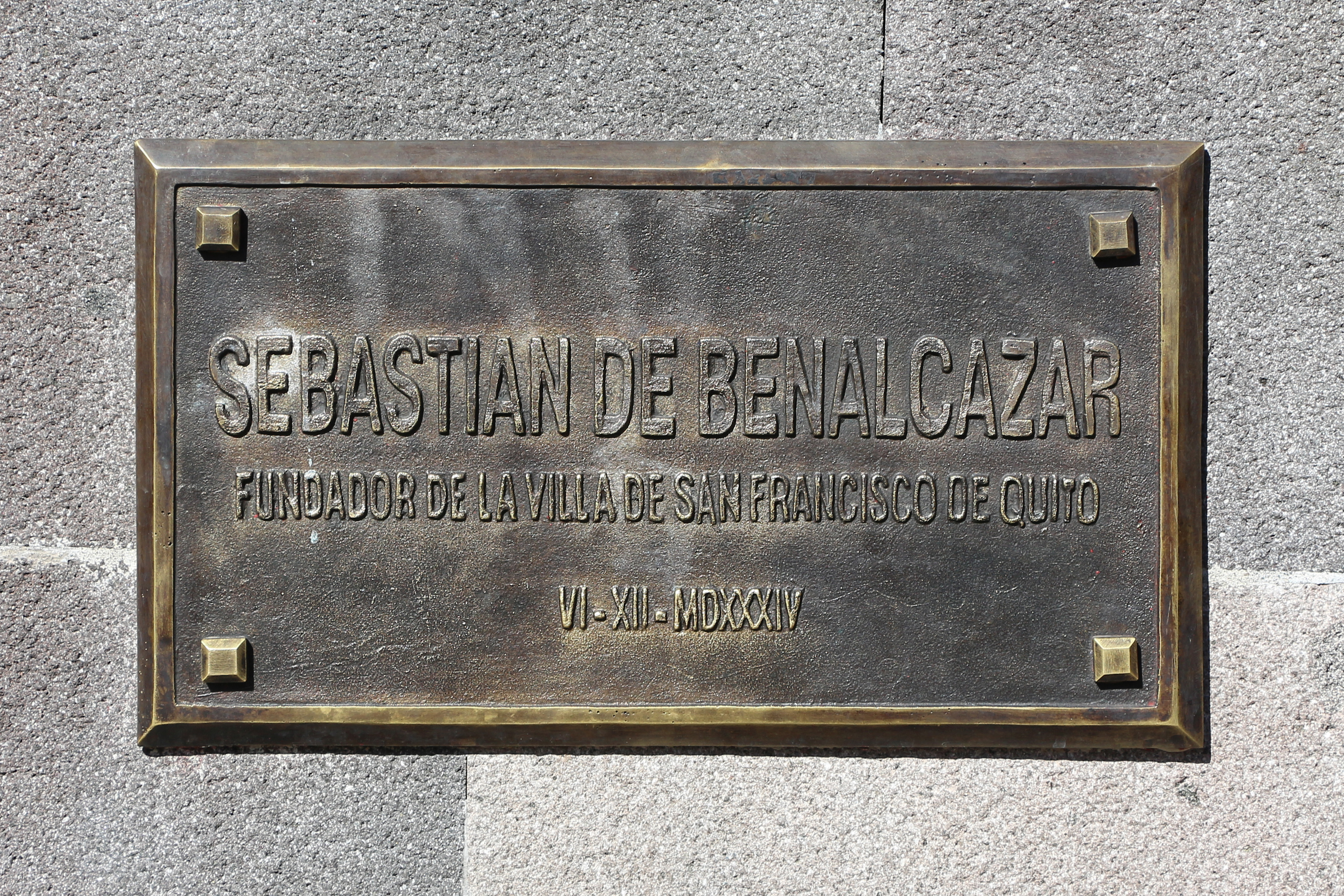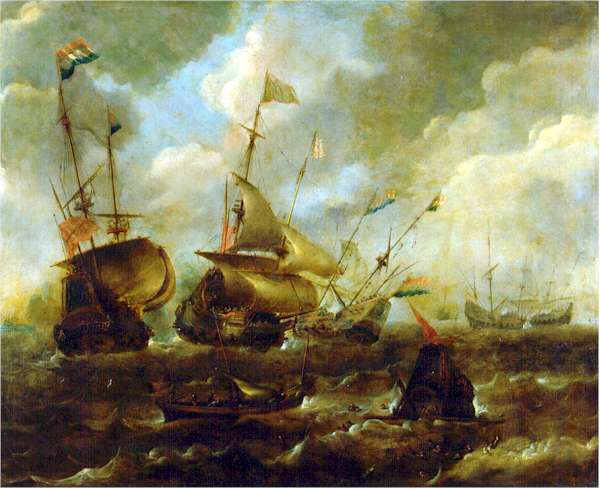|
The Last Lord Of Eldorado
"The Last Lord of Eldorado" is a 1998 Donald Duck Donald Fauntleroy Duck is a cartoon character created by The Walt Disney Company. Donald is an anthropomorphic white duck with a yellow-orange bill, legs, and feet. He typically wears a sailor shirt and cap with a bow tie. Donald is known fo ... comic story by Don Rosa. The story was first published in the Danish ''Anders And, Anders And & Co.'' #1998-06; the first American publication was in ''Uncle Scrooge'' #311, in July 1988. Plot The story continues directly from Rosa's earlier story "Treasure under Glass". Recently having found a map of all sunken treasure ships in the 17th century, Scrooge McDuck, Donald Duck, and his Huey, Dewey, and Louie, nephews are retrieving treasures from them. From a sunken ship named ''Dukatenesel'', Donald obtains a golden plaque commemorating the founding of an Augsburgian Welser consortium in New Kingdom of Granada, New Granada on February 21, 1539. This intrigues Scrooge, so he, Donald ... [...More Info...] [...Related Items...] OR: [Wikipedia] [Google] [Baidu] |
Scrooge McDuck
Scrooge McDuck is a cartoon character created in 1947 by Carl Barks for The Walt Disney Company. Appearing in Disney comics, Scrooge is a Scottish-American anthropomorphic Pekin duck. Like his nephew Donald Duck, he has a yellow-orange bill, legs, and feet. He typically wears a red or blue frock coat, top hat, pince-nez glasses, and spats varying in color. He is portrayed in animation as speaking with a Scottish accent. Originally intended to be used only once, Scrooge became one of the most popular characters in Disney comics, and Barks' signature work. Scrooge lives in the city of Duckburg (which is also Donald Duck's, and Huey, Dewey, and Louie's home city) in the fictional US state of Calisota (a blend of California and Minnesota), whose claimed location is in California in the real-world United States. Named after Ebenezer Scrooge from Charles Dickens' 1843 novella ''A Christmas Carol'', Scrooge is an incredibly rich business magnate and self-proclaimed "adven ... [...More Info...] [...Related Items...] OR: [Wikipedia] [Google] [Baidu] |
Sebastián De Belalcázar
Sebastián de Belalcázar (; 1479/1480 – 1551) was a Spanish conquistador. De Belalcázar, also written as de Benalcázar, is known as the founder of important early colonial cities in the northwestern part of South America; Quito in 1534 and Cali, Pasto and Popayán in 1537. De Belalcázar led expeditions in present-day Ecuador and Colombia and died of natural causes after being sentenced to death in Cartagena, at the Caribbean coast in 1551. Early life He was born as Sebastián Moyano in the province of Córdoba, Spain, in either 1479 or 1480. He took the name Belalcázar as that was the name of the castle-town near to his birthplace in Córdoba. According to various sources, he may have left for the New World with Christopher Columbus as early as 1498. Americas He was an encomendero in Panama in 1522. He entered Nicaragua with Francisco Hernández de Córdoba in 1524 during the conquest of Nicaragua, and became the first mayor of the city of León in Nicaragua. H ... [...More Info...] [...Related Items...] OR: [Wikipedia] [Google] [Baidu] |
1637
Events January–March * January 5 – Pierre Corneille's tragicomedy ''Le Cid'' is first performed, in Paris, France. * January 16 – The siege of Nagpur ends in what is now the Maharashtra state of India, as Kok Shah, the King of Deogarh, surrenders his kingdom to the Mughal Empire. * January 23 – John Maurice, Prince of Nassau-Siegen arrives from the Netherlands to become the Governor of Dutch Brazil, and extends the range of the colony over the next six years. * January 28 – The Manchu armies of China complete their invasion of northern Korea with the surrender of King Injo of the Joseon Kingdom. * February 3 – Tulip mania collapses in the Dutch Republic. * February 15 – Ferdinand III becomes Holy Roman Emperor upon the death of his father, Ferdinand II, although his formal coronation does not take place until later in the year. * February 18 – Eighty Years' War – Battle off Lizard Point: Off the coast of Cornwa ... [...More Info...] [...Related Items...] OR: [Wikipedia] [Google] [Baidu] |
1579
Year 1579 ( MDLXXIX) was a common year starting on Thursday (link will display the full calendar) of the Julian calendar, and a common year starting on Monday of the Proleptic Gregorian calendar. Events January–June * January 6 – The Union of Arras unites the southern Netherlands under the Duke of Parma, governor in the name of king Philip II of Spain. * January 23 – The Union of Utrecht unites the northern Netherlands in a confederation called the United Provinces. William I of Orange becomes ''Stadtholder'', and the Duc d'Anjou, younger brother of Henry III of France, is invited to become hereditary sovereign. * March – Maastricht is captured by the Spanish under Parma. * May 25 – Japan – Battle of Mimaomote: Doi Kiyonaga defeats the forces of Kumu Yorinobu. * June 17 – Francis Drake, during his circumnavigation of the world, lands in what is now California, which he claims for Queen Elizabeth I. With an English cla ... [...More Info...] [...Related Items...] OR: [Wikipedia] [Google] [Baidu] |
Jiménez De Quesáda
Jiménez or Jimenez may refer to: People * Jiménez (surname), a Spanish name, includes the name Jimenez * Jiménez dynasty, a medieval Iberian ruling family, including a list of members Places Mexico * Ciudad Jiménez, a city in Chihuahua (officially "José Mariano Jiménez") * Cadereyta Jiménez, a city in Nuevo León * Huautla de Jiménez, a town in Oaxaca * Jiménez Municipality, Coahuila * Jiménez Territory, former subdivision ** Jiménez, Coahuila, a town and the municipal seat * Jiménez, Tamaulipas, a town in Tamaulipas Other places * Jiménez Department, a department in Santiago del Estero Province, Argentina * Jiménez (canton), a canton in the province of Cartago, Costa Rica * Jimenez, Misamis Occidental, a municipality in Misamis Occidental, Philippines * Jiménez, Río Grande, Puerto Rico, a barrio in Puerto Rico, U.S. Other uses * Jimenez Arms, former American manufacturer of firearms, now JA Industries * Grupo León Jimenes, the largest company in the Dominican Re ... [...More Info...] [...Related Items...] OR: [Wikipedia] [Google] [Baidu] |
The Wages Of Fear
''The Wages of Fear'' (french: Le Salaire de la peur) is a 1953 French thriller film directed by Henri-Georges Clouzot, starring Yves Montand, and based on the 1950 French novel ''Le Salaire de la peur'' (lit. "The Salary of Fear") by Georges Arnaud. When an oil well owned by an American company catches fire, the company hires four European men, down on their luck, to drive two trucks over mountain dirt roads, loaded with nitroglycerine needed to extinguish the flames. The film brought Clouzot international fame—winning both the Golden Bear and the Palme d'Or at the 1953 Berlin Film Festival and Cannes Film Festival, respectively—and enabled him to direct '' Les Diaboliques'' (1955). In France, it was the fourth highest-grossing film of the year with a total of nearly 7 million admissions. Plot Frenchmen Mario and Jo, German Bimba and Italian Luigi are stuck in the isolated town of Las Piedras. Surrounded by desert, the town is linked to the outside world only by an airs ... [...More Info...] [...Related Items...] OR: [Wikipedia] [Google] [Baidu] |
Abbess
An abbess (Latin: ''abbatissa''), also known as a mother superior, is the female superior of a community of Catholic nuns in an abbey. Description In the Catholic Church (both the Latin Church and Eastern Catholic), Eastern Orthodox, Coptic and Anglican abbeys, the mode of election, position, rights, and authority of an abbess correspond generally with those of an abbot. She must be at least 40 years old and have been a nun for 10 years. The age requirement in the Catholic Church has evolved over time, ranging from 30 to 60. The requirement of 10 years as a nun is only eight in Catholicism. In the rare case of there not being a nun with the qualifications, the requirements may be lowered to 30 years of age and five of those in an "upright manner", as determined by the superior. A woman who is of illegitimate birth, is not a virgin, has undergone non-salutory public penance, is a widow, or is blind or deaf, is typically disqualified for the position, saving by permission of ... [...More Info...] [...Related Items...] OR: [Wikipedia] [Google] [Baidu] |
Plateau
In geology and physical geography, a plateau (; ; ), also called a high plain or a tableland, is an area of a highland consisting of flat terrain that is raised sharply above the surrounding area on at least one side. Often one or more sides have deep hills or escarpments. Plateaus can be formed by a number of processes, including upwelling of volcanic magma, extrusion of lava, and erosion by water and glaciers. Plateaus are classified according to their surrounding environment as intermontane, piedmont, or continental. A few plateaus may have a small flat top while others have wide ones. Formation Plateaus can be formed by a number of processes, including upwelling of volcanic magma, extrusion of lava, Plate tectonics movements and erosion by water and glaciers. Volcanic Volcanic plateaus are produced by volcanic activity. The Columbia Plateau in the north-western United States is an example. They may be formed by upwelling of volcanic magma or extrus ... [...More Info...] [...Related Items...] OR: [Wikipedia] [Google] [Baidu] |
Monastery
A monastery is a building or complex of buildings comprising the domestic quarters and workplaces of monastics, monks or nuns, whether living in communities or alone ( hermits). A monastery generally includes a place reserved for prayer which may be a chapel, church, or temple, and may also serve as an oratory, or in the case of communities anything from a single building housing only one senior and two or three junior monks or nuns, to vast complexes and estates housing tens or hundreds. A monastery complex typically comprises a number of buildings which include a church, dormitory, cloister, refectory, library, balneary and infirmary, and outlying granges. Depending on the location, the monastic order and the occupation of its inhabitants, the complex may also include a wide range of buildings that facilitate self-sufficiency and service to the community. These may include a hospice, a school, and a range of agricultural and manufacturing buildings such as a barn, a ... [...More Info...] [...Related Items...] OR: [Wikipedia] [Google] [Baidu] |
Colombia
Colombia (, ; ), officially the Republic of Colombia, is a country in South America with insular regions in North America—near Nicaragua's Caribbean coast—as well as in the Pacific Ocean. The Colombian mainland is bordered by the Caribbean Sea to the north, Venezuela to the east and northeast, Brazil to the southeast, Ecuador and Peru to the south and southwest, the Pacific Ocean to the west, and Panama to the northwest. Colombia is divided into 32 departments and the Capital District of Bogotá, the country's largest city. It covers an area of 1,141,748 square kilometers (440,831 sq mi), and has a population of 52 million. Colombia's cultural heritage—including language, religion, cuisine, and art—reflects its history as a Spanish colony, fusing cultural elements brought by immigration from Europe and the Middle East, with those brought by enslaved Africans, as well as with those of the various Amerindian civilizations that predate colonization. Spanis ... [...More Info...] [...Related Items...] OR: [Wikipedia] [Google] [Baidu] |
Junior Woodchucks Guidebook
The Junior Woodchucks of the World is a fictional scouting organization appearing in Disney comics and the ''DuckTales'' animated television franchise, most notably in adventures featuring Disney characters Huey, Dewey, and Louie as members. The Junior Woodchucks were created by Carl Barks in 1951, in the story "Operation St. Bernard" (''Walt Disney's Comics and Stories'' #125). Later stories introduced a similar organization for girls, the The Junior Chickadees, Littlest Chickadees, to which Daisy Duck's nieces, April, May and June belong. The hallmark of the Junior Woodchucks is their spirited dedication to environmental protection, animal welfare and international peace, as well as the preservation of knowledge and the furtherance of science & technology. They are also known for their exalted titles & ranks (Huey, Dewey, and Louie being promoted to become ''Ten-Star Generals'' in the 1951 story of the same name) and the awarding of buckets of badges, along with strict ideals as ... [...More Info...] [...Related Items...] OR: [Wikipedia] [Google] [Baidu] |






